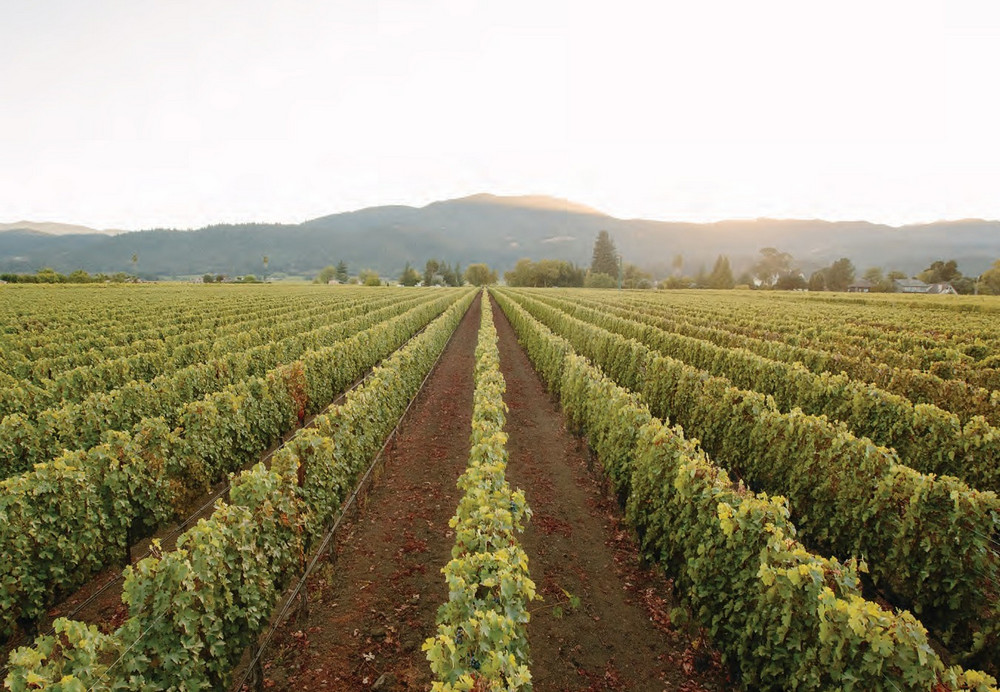The Historic Heart of the Napa Valley
Considered the historic heart of Napa – its latitude and longitude place it directly in the middle of the Valley – Rutherford’s viticultural area encompasses six square miles and three sub-zones, each bordered on the east by the Vaca Mountains and the west by Mount St. John. Its 6,840 acres are planted primarily to Cabernet Sauvignon, for which the area first gained acclaim in 1939 when Georges de Latour won a gold medal at the Golden Gate International Exposition for his 1936 Beaulieu Vineyard Cabernet Sauvignon crafted by Joseph Ponti, whose responsibilities included winemaking and supervising the vineyard crews and the cellar; he even did some bookkeeping.
The 1936 Georges de Latour Private Reserve, released in 1941, was the first wine to be accepted through- out the world as a premier- cru level bottling. It was also Napa Valley and California’s first intentionally varietal Cabernet Sauvignon to gain international recognition; its success set Napa Valley, and specifically Rutherford, on a steady course toward specialization in Bordeaux- type wines. George de Latour Private Reserve remains a benchmark of style and quality in California wine. Today, Steve Tonella, Ponti’s great-nephew, is a fourth- generation Rutherford vintner and current board president of the Rutherford Dust Society.
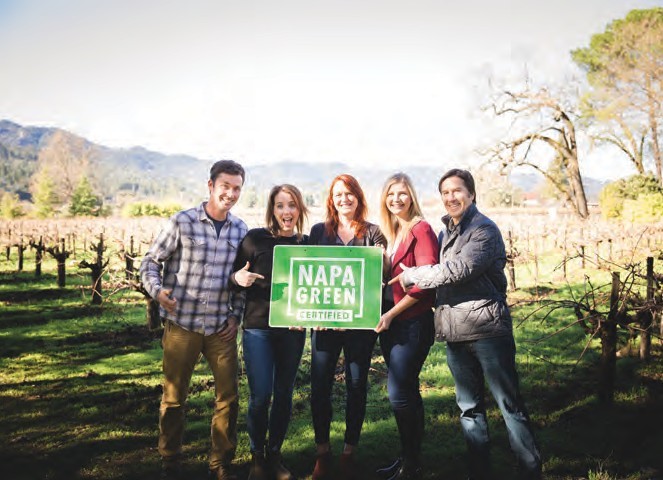
Rutherford is the first AVA association to have 100% participation in the Napa Green Land program. Photo taken at Leeds & Pesch Vineyard.
One of the more unusual aspects about Rutherford is that it has a higher radiant value than other parts of Napa Valley, meaning that because the area’s location is at Napa Valley’s widest point, it spends more time in the sun. Those warm days give way to cool evenings, a fluctuation that allows fruit to ripen at a steady pace.
But what truly makes this AVA unique is the soil, referred to as Rutherford Dust, a term coined by the great André Tchelistcheff who started in the wine industry as a Beaulieu Vineyard enologist and later became a mentor to some of the Valley’s most celebrated winemakers.
The term has become synonymous with the region, and the region has become synonymous with great Cabernet. “André once proclaimed that to make a great California Cabernet, you need Rutherford Dust,” said Andy Beckstoffer, renowned Napa Valley grape grower and proprietor of Beckstoffer Vineyards. “Napa Valley’s Cabernet history is Rutherford’s history.”
Rutherford’s soil is gravelly, sandy, and loamy, its origins derived from the shattered, well-bedded sandstone of three alluvial fans. The AVA’s three sub-zones are further defined by their soil qualities: The western Rutherford Bench contains the soil sediment deposited by the Mayacamas Mountains; the Valley Floor features more fertile alluvial and sedimentary soils, and the eastern Benchland features coarse, gravelly soils that transition to a finer grade. All of the AVA’s deposits are dominated by the Franciscan marine sedimentary materials found in volcanic deposits. Deep and well-drained, the fans have pockets that allow runoff to more easily flow to streams and the Napa River.
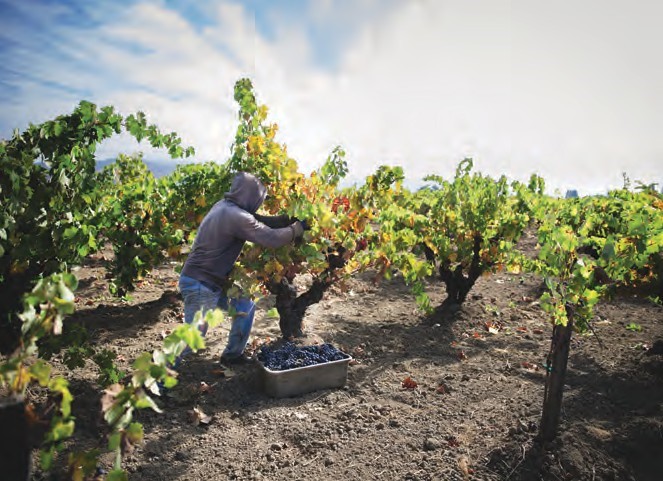
Morisoli // Photo by Margaret Nissen
Trevor Durling, Chief Wine- maker and General Manager for Beaulieu Vineyard, describes the “Rutherford Dust” character as a fine cocoa-powder texture and flavor. “The distinctive Rutherford Dust attribute created by our soils and microclimate is unique to this place and comes from this incredible terroir that promotes rich, concentrated, and highly complex wines,” says Durling. “Rutherford is among the most special and unique Cabernet- growing regions in the world. In addition to the well-draining alluvial soil, it has so many wonderful things going for it, including optimal sun exposure.”
The Rutherford appellation was designated in 1993, and shortly after, the Rutherford Dust Society (RDS, the AVA’s membership group) was founded in 1994 by the area’s growers and vintners in tribute to the legacy of their grape growing and winemaking forebears. With names such as de Latour, Gustav Niebaum of Inglenook, and Thomas Rutherford, each made formidable investments in grape production and winemaking during the late 19th century, establishing themselves as growers and producers of high-quality wines. Some of Rutherford’s continually operating historic vineyards include Chaix Family Vineyard established in 1909, Tonella Vineyard, first recorded as part of an 1836 land grant from the Mexican government to George C. Yount for whom
Yountville is named, and the Beckstoffer Georges III Vineyard, portions of which were planted in 1895 by Thomas Rutherford.
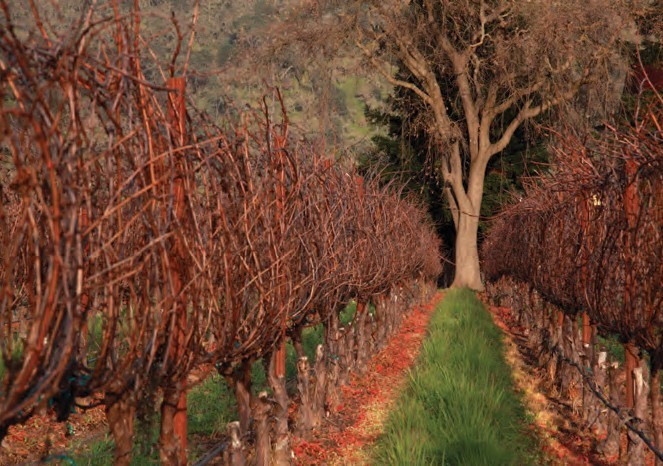
Beckstoffer Vineyard Georges III
Another pioneer was Rocco Morisoli, great-great-grandfather of fifth-generation Rutherford grape grower Chris Morisoli. Rocco arrived in Napa in 1883 from the Swiss-Italian town of Monte Carasso. By 1902, Rocco and his wife Lodovina had settled in a small white farmhouse on Niebaum lane, the ten acres of which Lodovina later purchased and on which her son Plinio farmed grapes. Plinio also owned the general store located where the Rutherford Grill now stands. Today, this Rutherford ranch is farmed by Chris and his parents Gary and Melody, and includes 53 acres planted and 57 acres total of contiguous vineyard between Niebaum and Manley Lanes. It is currently planted to Cabernet Sauvignon and Zinfandel, including one small block of field blend Zinfandel that was planted between 1902-1910 and is still producing today. Morisoli sells its grapes to other wineries but is excited to soon introduce its first Morisoli label, a 2021 Cabernet Sauvignon.
Chris, a board member of RDS, celebrates his family’s history in the valley and the deep roots that many of its residents, growers, and vintners share.
“Rutherford has always been centered around what happens in the vineyard when it comes to making outstanding, authentic wines,” he said.
Since its inception, RDS growers and vintners have been committed to both quality and community. Today, the RDS members consider themselves stewards of both a proud history and of the land itself. The AVA’s mission is to encourage and promote the highest quality standards in grape growing and winemaking in the Rutherford Viticultural Area, to take care of the land while building community, and to help wine lovers and the wine trade discover Rutherford’s expression of its unique terroir.
“When we started RDS in 1994, we did something different in that most of the AVA organizations exist to promote wine,” said Beckstoffer, who sits on the RDS board. “We set a different goal – to involve the community in protecting the Napa River by being good stewards of our vine- yards. Rutherford is about the vineyards. Lots of people make wine using Rutherford grapes, but as landowners, our emphasis is on the vineyard rather than the winery, which is what makes our AVA different.”
Added Emma Swain, CEO of St. Supéry Estate Vineyards & Winery, a longstanding winery member of RDS, “Reflecting on the RDS, I remember in 1994 Andy was so passionate about the land, and he infected us all with his enthusiasm. Just like being part of the Napa Valley Vintners, RDS is always a group of neighbors helping neighbors, illustrated with the groundbreaking work we undertook as a group to restore the Napa River through the Rutherford region. A group of likeminded vintners putting conservation first, and giving up arguably some of the most valuable acreage in Napa Valley for the protection of the river and surrounding environment— that’s community.”
“Since the 1880s, Rutherford was chosen as the place to be by vintners and growers that shaped Napa Valley,” said Lisa Barker- Mullen, RDS board member and estate director of Sullivan Rutherford Estate.
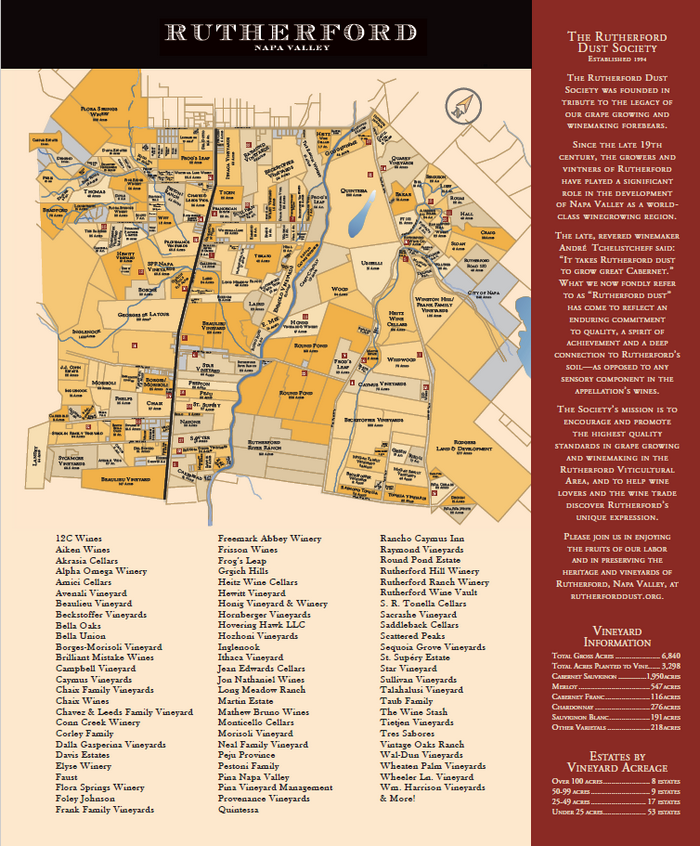
“Producing wine from this historic center of Napa Valley and being able to continue that legacy is a unique and remarkable opportunity for all of us in Rutherford.”
Article By: Fran Miller

